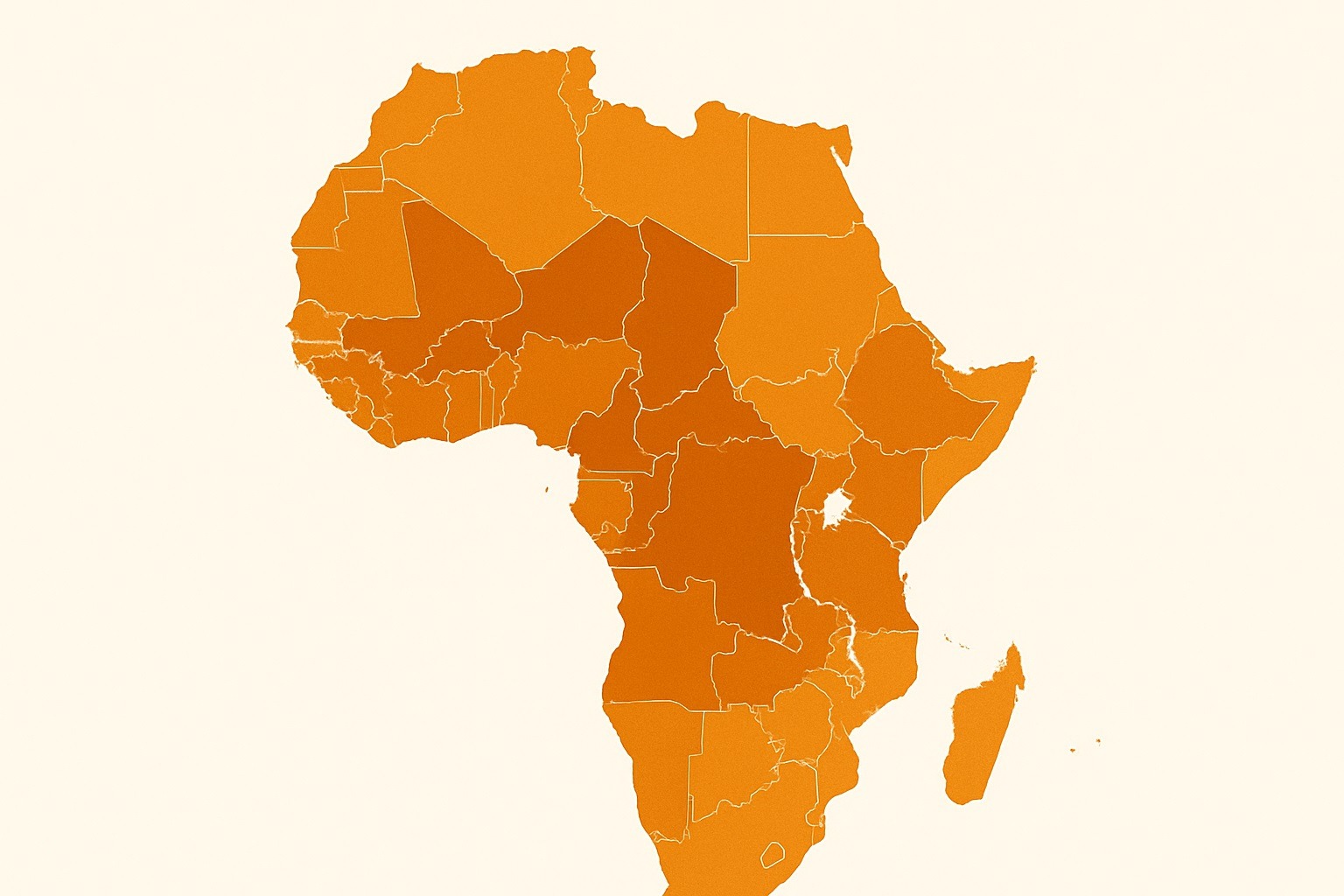Fertility rate is a demographic indicator that represents the average number of children a woman gives birth to during her fertile years. This rate plays a critical role in understanding the population dynamics, economic development, and social policies of countries. Fertility rates vary greatly from country to country across the globe. High fertility rates are particularly notable in some regions of Africa, while in developed countries, this rate is generally low. These differences are shaped by various factors, including cultural values, economic conditions, education levels, and healthcare services.
Countries with high fertility rates typically have a young population structure, and this creates various challenges in terms of economic opportunities and social services. In countries like Niger, Angola, Chad, and the Democratic Republic of Congo, fertility rates exceed 5, which leads to rapid population growth. A high number of children in these countries can put pressure on social security systems and healthcare infrastructure. On the other hand, this demographic structure can provide a significant advantage in terms of workforce potential in the long run. Therefore, analyzing fertility rates is crucial not only for understanding population growth but also for sustainable development and social policies.
Which country has the highest fertility rate in the world?

As of 2025, Niger has the highest fertility rate in the world. The average number of births per woman in Niger is recorded at 6.32. This rate is significantly above the global average (around 2.3), placing Niger at the top of the global fertility ranking. Following Niger are African countries such as Angola (5.8), the Democratic Republic of the Congo (5.6), and Mali (5.5).
The high fertility rate in Niger is associated with various socioeconomic and cultural factors. Early marriages are common in the country, and the average age of first birth for women is 18.1 years. Furthermore, access to modern contraceptive methods is limited, and the use of birth control is very low. This situation, combined with low levels of education for women and restrictions on access to healthcare services, supports the high fertility rates. Niger’s population is rapidly increasing, which is putting significant pressure on areas such as healthcare, education, and infrastructure. Therefore, reducing fertility rates and controlling population growth is crucial for sustainable development goals.
Why is the fertility rate so high in Africa?

One of the main reasons for high fertility rates in Africa is cultural values. In many African societies, a large family structure is valued, and the number of children is seen as both a social status and an economic security. Especially in rural areas, children are considered as contributors to agricultural labor, making having more children an advantage. Additionally, early marriages and women starting to give birth at a young age are factors that contribute to the overall fertility rate.
Another reason for high fertility rates is limited access to healthcare services and modern contraceptive methods. In many African countries, women do not have adequate access to family planning services, and low education levels lead to a lack of knowledge about or use of birth control methods. Moreover, women’s roles in society are often limited to motherhood, which places societal expectations above individual preferences. All these factors combine to cause fertility rates in Africa to remain well above the global average.
What is Turkey’s fertility rate and what is its rank in the world?

As of 2023, Turkey’s total fertility rate is recorded at 1.51 children. This rate represents the average number of children a woman gives birth to during her fertile years. Turkey’s fertility rate is well below the replacement level of 2.1, which is considered the threshold for population replacement. This indicates a slowdown in Turkey’s population growth rate and suggests that the proportion of the elderly population may increase in the future. Fertility rates are particularly lower in large cities and western provinces.
When considering the global perspective, Turkey ranks in the lower-middle range for fertility rates. According to 2023 data, Turkey ranks approximately 170th out of 190 countries with a fertility rate of 1.51. This ranking indicates that Turkey is moving toward a demographic structure similar to that of developed countries. However, this trend makes it necessary to implement policies that encourage fertility in the long term, such as family support, maternity leave, and child care services.
Which country in Europe has the highest fertility rate?

In Europe, the country with the highest fertility rate is France. According to 2023 data, France’s total fertility rate is recorded at approximately 1.84 children. This rate is above the European average (around 1.5) and is an important demographic indicator that sets France apart within the continent. The relatively high fertility rate in France is largely influenced by its immigrant population. In particular, communities of North and West African origin have higher fertility rates, which raise the overall average, while France’s family-friendly social policies also contribute to maintaining these rates.
France’s policies that provide financial support to families with children, free or low-cost daycare services, and long maternity leaves are among the key factors supporting fertility. The government’s active social policies that facilitate family life allow women to balance work and motherhood. This situation ensures that, while fertility rates are declining in many European countries, France remains stable in this regard. The French model is considered a successful social policy model for countries seeking to increase fertility rates.
What are the reasons for the decline in fertility rates?

One of the main reasons for the decline in fertility rates is urbanization and the spread of modern lifestyles. With urbanization, living costs rise, and access to basic needs such as housing, education, and healthcare becomes more expensive. This leads couples to prefer having fewer children. Additionally, the increase in women’s education levels and their participation in the workforce delays childbearing and reduces the fertility period. These socioeconomic changes directly affect fertility rates in many countries.
Another significant factor is the transformation of individual life choices and family structures. Today, concepts such as individual freedoms, career goals, and quality of life are more prominent. This leads to higher marriage ages and delayed decisions regarding having children. At the same time, the widespread use of birth control methods and increased access to healthcare services give individuals more control over reproduction. All these factors combine to reduce fertility rates, which, in the long term, brings about demographic issues such as an aging population and workforce imbalances.
What is the relationship between fertility rate and population growth?

Fertility rate is one of the key demographic indicators that directly affects a country’s population growth rate. The total fertility rate represents the average number of children a woman gives birth to over her lifetime. The higher this rate, the faster the natural population growth occurs. Especially in countries with a fertility rate above 2.1, the population tends to grow naturally. This creates structures with a dominant young population, leading to increased demands in areas such as education, healthcare, and employment.
In contrast, in countries where the fertility rate falls below 2.1, population growth either stops or begins to decline over time. This leads to an aging society and can create significant challenges for economic sustainability. A low fertility rate increases the average age of the population, placing greater strain on social security systems. Therefore, there is a strong and reciprocal relationship between fertility rate and population growth; demographic planning and social policies that take this relationship into account are crucial for maintaining the structural balance of countries in the future.
Which countries have the lowest fertility rates?

As of 2024, South Korea has the lowest fertility rate in the world. In South Korea, the total fertility rate has dropped to 0.72 children, representing the lowest level globally. This dramatic decline has been influenced by high living costs, a career-focused lifestyle, long working hours, and inadequate social support for child care. Particularly, younger generations are postponing or completely abandoning marriage and childbearing decisions due to economic uncertainties and the prioritization of individual freedoms.
Following South Korea, countries such as Taiwan, Singapore, Hong Kong, Japan, and Italy also stand out for their low fertility rates. In these countries, similar factors such as increased educational and career opportunities for women, later marriage ages, and the financial burdens of having children negatively impact fertility. This situation leads to an aging population, a shrinking workforce, and long-term pressure on social security systems. To address this issue, many countries are developing policies such as financial support for birth incentives, free daycare services, and maternity leave reforms.
What measures are countries with declining fertility rates taking?

Countries with declining fertility rates are implementing various incentive policies to prevent risks such as an aging population and long-term economic sustainability. The most common measures include birth grants, cash support per child, and tax reductions. For example, countries in Europe like France, Germany, and Sweden provide financial assistance to families with children and extend parental leave after childbirth. Additionally, offering child care services for free or at low cost positively influences working parents’ decisions to have children.
Countries promoting fertility are also popularizing flexible working models that support women’s participation in the workforce and developing family-friendly workplace policies. In Asian countries like Japan and South Korea, public awareness campaigns and efforts to increase societal awareness about marriage and childbearing are prominent. Some countries are also using immigration policies as a strategic tool against the fertility crisis by attracting young foreign populations. All these steps are being implemented to both increase birth rates and establish a balanced demographic structure supported by a young population.
What is the relationship between fertility rate and economic development?

There is an inverse relationship between fertility rate and economic development. Generally, in economically more developed countries, fertility rates are lower. One of the main reasons for this is the high cost of living in developed countries, which makes raising children a significant economic burden. As expenses in areas such as education, healthcare, housing, and childcare increase, families tend to have fewer children. Additionally, the increase in women’s education levels and workforce participation is a determining factor for fertility, as it delays the age at which women have children, thereby reducing the overall fertility rate.
In countries with lower economic development, fertility rates are generally higher. The reasons for this include viewing children as an economic contribution, underdeveloped social security systems, and families relying on children for support in old age. Furthermore, limited access to education and healthcare services hinders the spread of birth control methods and encourages early marriages. Therefore, the economic structure and level of welfare emerge as significant societal dynamics influencing fertility rates.
What is the relationship between fertility rate and education level?

There is generally an inverse relationship between fertility rate and education level. Specifically, an increase in women’s education levels is an important factor in lowering fertility rates. Educated women tend to focus on career goals, marry later, and delay the decision to have children. Additionally, education increases access to birth control methods and the use of these methods, which helps prevent unwanted pregnancies and reduces the overall fertility rate. This trend is observed in both developed and developing countries.
An increase in education level also leads to significant changes in individuals’ living standards, awareness, and future planning. More educated individuals tend to focus on the education and well-being of their children rather than having many children. This leads to an approach focused on providing a higher quality of life with fewer children. Moreover, the spread of education enhances women’s economic independence, allowing them to shape their lives without being limited to domestic roles. For all these reasons, there is a strong and multifaceted relationship between education level and fertility.
